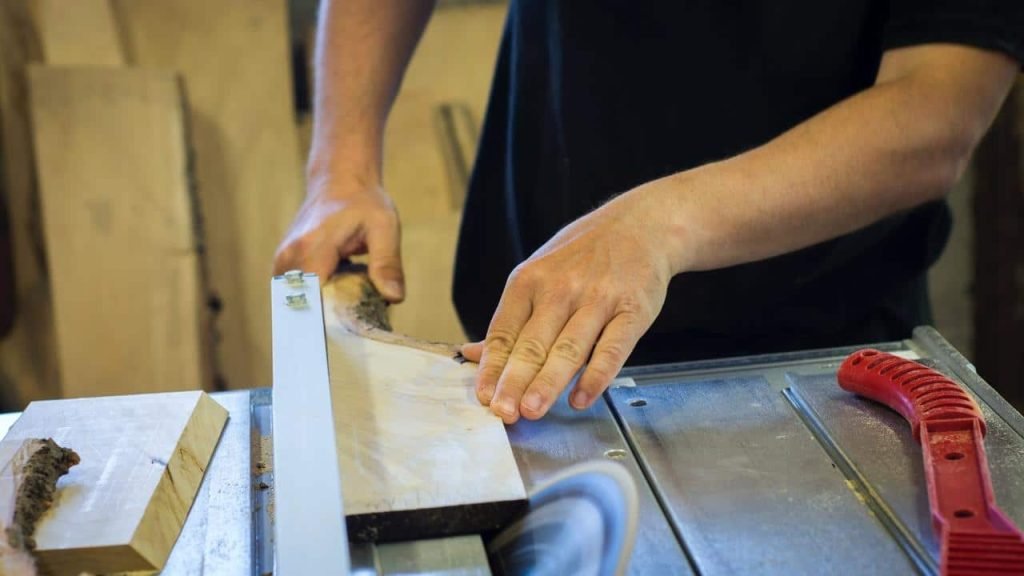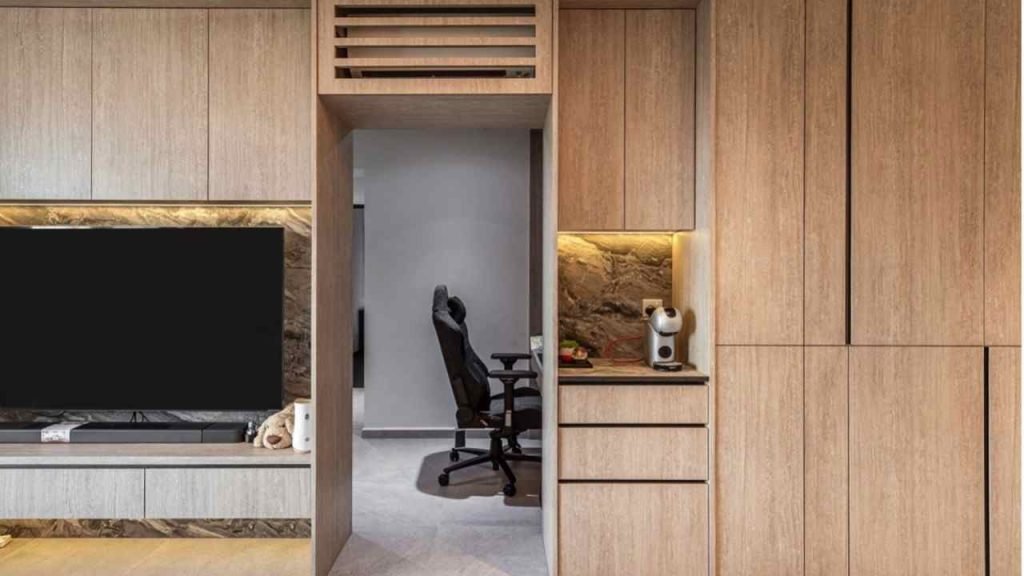If you’ve ever marveled at the intricate details of a beautifully finished home, you’ve likely admired the work of a trim carpenter. In San Antonio, these skilled craftsmen play a crucial role in adding the finishing touches that elevate a space from ordinary to exceptional. Their primary task revolves around enhancing the aesthetic appeal of a room while also ensuring structural integrity and seamless transitions between different architectural elements. Let’s delve deeper into the world of trim carpentry in San Antonio and uncover the artistry behind their craftsmanship with the assistance of Creative Remodeling and Home Restoration.

From installing baseboards and crown molding to crafting custom trim around windows and doors, trim carpenters bring precision and artistry to interior design. They meticulously measure, cut, and fit various trim elements, ensuring they seamlessly integrate with the overall architectural style of the space. Carpenters utilizing trim carpentry services, are adept at handling a wide range of projects, including wainscoting, chair rails, and decorative ceiling moldings, showcasing their versatility and attention to detail. Their services are essential for enhancing the aesthetic appeal and adding a finishing touch to both residential and commercial properties, making them valuable contributors to the construction and interior design industry.
Installing Baseboards and Crown Molding
Trim carpenters for open floor plans excel at enhancing the visual appeal of interior spaces by expertly installing baseboards and crown molding. In these designs, baseboards serve not only to cover gaps but also to delineate different areas within the open layout, providing a cohesive and finished look to each space. Crown molding, strategically installed at the junction of walls and ceilings, adds a touch of elegance and architectural interest that seamlessly connects adjoining areas. Trim carpenters in open floor plans meticulously ensure precise measurements and cuts, creating seamless installations that elevate the overall aesthetics and flow of the entire space.”
Crafting Custom Trim for Windows and Doors
Custom trim adds a personalized and upscale touch to the interior design, resulting in a cohesive and visually appealing look throughout the space. Trim carpenters leverage their woodworking skills to create bespoke designs tailored to the client’s preferences and the overall design scheme, ultimately adding significant value to the property’s overall appeal and marketability. Trim carpenters play a crucial role in increasing the value of a property by crafting custom trim pieces for windows and doors. This involves skillfully creating trim that not only fits the specific dimensions and style of each window or door but also enhances the overall aesthetic appeal of the home or building.
Precision in Measurement and Cutting
One of the primary tasks of a trim carpenter is to work with precision in measurement and cutting. This ensures that trim pieces fit perfectly and create seamless transitions between various architectural elements. When hiring trim carpentry professionals, it’s important to watch out for red flags such as a lack of experience or training, as these can lead to inaccurate measurements and poor-quality cuts. Trim carpenters should be skilled in using tools such as tape measures, miter saws, and angle finders to achieve accurate results. Lack of precision in these tasks can be a sign of subpar workmanship and may result in unsatisfactory outcomes in trim carpentry projects.
Integrating Trim with Architectural Style
Trim carpenters are skilled at integrating trim elements with the architectural style of a building or home. They consider factors such as the design era, building materials, and existing trim work when planning and installing new trim. Whether working in a modern, contemporary space or a traditional setting, trim carpenters ensure that the trim enhances the overall architectural style and complements other design elements in the interior space.

Versatility in Trim Carpentry Projects
Trim carpenters demonstrate versatility in a wide range of trim carpentry projects. Besides baseboards, crown molding, and custom trim for windows and doors, they may work on projects such as wainscoting, chair rails, and decorative ceiling moldings. This versatility allows trim carpenters to tackle various design challenges and create custom solutions that meet the client’s aesthetic and functional needs.
Attention to Detail in Trim Installation
Attention to detail is a hallmark of trim carpentry work. Trim carpenters pay close attention to every aspect of trim installation, from precise measurements and cuts to seamless joints and smooth finishes. Attention to detail ensures that the trim work looks cohesive, professional, and enhances the overall beauty of the space. It also contributes to the longevity and durability of the trim, as well-installed trim is less likely to develop issues over time.
Working on Wainscoting Projects
Wainscoting is a decorative wall treatment that involves installing wood panels or molding on the lower portion of walls. Trim carpenters are skilled at working on wainscoting projects, creating custom panel designs or installing prefabricated wainscoting systems. Wainscoting adds texture, visual interest, and architectural charm to interior spaces, and trim carpenters ensure that wainscoting installations are done with precision and attention to detail.
Chair Rails and Their Installation
Chair rails are horizontal moldings installed on walls at chair height, serving both functional and decorative purposes. Trim carpenters are responsible for installing chair rails, ensuring they are level, properly aligned, and securely attached to the wall. Chair rails protect walls from damage caused by furniture and add a touch of elegance to rooms. Trim carpenters select chair rail designs that complement the overall interior design scheme while providing a functional barrier against wear and tear.
Decorative Ceiling Moldings
Decorative ceiling moldings, such as crown molding and ceiling medallions, are intricate trim elements that add visual interest to ceilings. Trim carpenters work on installing decorative ceiling moldings, ensuring that they are properly aligned and enhance the architectural character of the room. Ceiling moldings can create a sense of height, define spaces, and draw attention to architectural features such as chandeliers or ceiling fans. Trim carpenters use their expertise to select and install ceiling moldings that elevate the overall design aesthetic.
Trim Carpentry in Residential Properties
In residential properties, trim carpenters play a crucial role in enhancing the interior aesthetics and functionality. They work on various trim elements such as baseboards, crown molding, window and door trims, wainscoting, and chair rails to create cohesive and visually appealing spaces. Trim carpenters collaborate with homeowners, designers, and contractors to understand design preferences and execute trim work that aligns with the overall design vision of the home.
Importance of Trim Carpentry in Interior Design
Trim carpentry plays a significant role in interior design by adding depth, character, and architectural detail to spaces. The precision and artistry of trim carpentry contribute to creating visually appealing transitions between walls, ceilings, floors, and architectural features. Trim elements such as baseboards, crown molding, and wainscoting can transform ordinary rooms into elegant and stylish spaces. Trim carpenters work with designers and homeowners to select the right trim profiles, finishes, and installation methods that enhance the overall interior design aesthetic and functionality.
Conclusion
Trim carpentry is a versatile and essential aspect of interior design and construction, offering a range of services that enhance the aesthetics, functionality, and architectural appeal of residential and commercial spaces. From installing baseboards and crown molding to crafting custom trim for windows, doors, and other architectural elements, trim carpenters bring precision, artistry, and attention to detail to their work. Their ability to integrate trim seamlessly with architectural styles, work with various materials, and create custom solutions showcases their expertise and versatility. Trim carpentry not only adds value and visual appeal to properties but also contributes to creating cohesive, well-designed interiors. The craftsmanship and meticulous approach of trim carpenters play a vital role in transforming ordinary spaces into extraordinary ones, making them an integral part of the interior design and construction industry.
FAQs
What does a trim carpenter do? Trim carpenters specialize in installing and finishing trim work in buildings, including baseboards, crown molding, window casings, and door frames, enhancing the aesthetic appeal of interiors.
How is trim carpentry different from general carpentry? While general carpenters work on various structural aspects of construction, trim carpenters focus specifically on the finer details of interior finishing, such as decorative moldings and trim installations.
What skills are important for a trim carpenter? Essential skills include precise measurement and cutting, understanding architectural plans, knowledge of different trim materials, proficiency in using carpentry tools, and attention to detail for seamless installations.
Can a trim carpenter work on custom projects? Yes, trim carpenters often create custom trim designs tailored to specific architectural styles or client preferences, showcasing their creativity and craftsmanship.
How can I find a reliable trim carpenter in my area? Research local carpentry firms or individual trim carpenters, check their portfolios, read reviews or testimonials from past clients, and ensure they have the necessary licenses and certifications for quality workmanship.
